If you’re looking to enhance your garden with the stunning Hesperaloe parviflora, also called “false yucca”, and commonly known as “red yucca”, you’re in for a treat! This resilient plant thrives in San Antonio, Texas. We’ll highlight some basic growing requirements and also look a some of the different varieties of Hesperaloe parviflora we have been bringing in at Rainbow Gardens.
Growing Requirements for Hesperaloe Parviflora
- Soil Drainage: Red yucca prefers well-draining soil. Ensure your planting area has good drainage to prevent root rot.
- Sunlight: This plant loves the sun! Aim for at least six hours of direct sunlight per day to promote robust growth. They can even take reflective heat from concrete and rock walls and paved driveways and sidewalks.
- Watering: While red yucca is drought-tolerant once established, regular watering is essential during the initial growth phase. Water deeply but infrequently to encourage strong root development.
- Additional Factors: Consider applying a layer of mulch to regulate soil temperature and maintain moisture, especially during hot summer months.
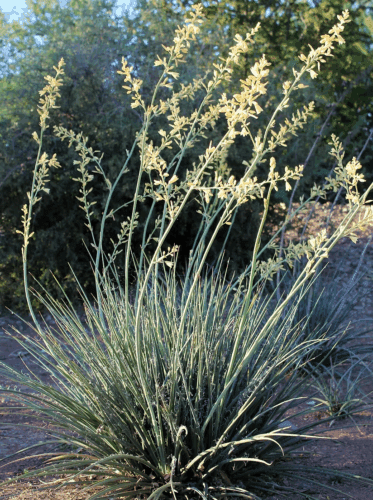
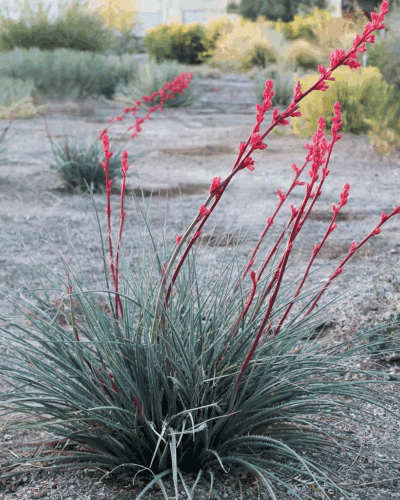
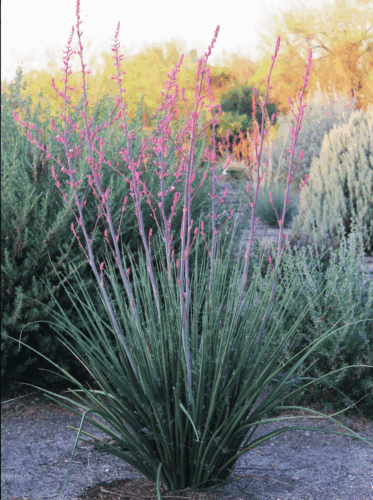
Comparing Hesperaloe Varieties
When it comes to Hesperaloe parviflora, several varieties stand out:
- Little Miss Sunshine (pic. left): Known for its compact size of 3′ T and 3′ W at maturity, this hesperaloe parviflora has bright yellow flowers and dense upright leaf blades. Welcome a cheerful pop of sunshine color to your landscapes.
- Red Yucca (featured pic): The classic choice of hesperaloe parviflora, featuring tall spikes adorned with tubular flowers that will have the hummingbirds in a tizzy. Yes, it’s called red yucca, but it’s flowers are more of a pinkish/coral hue. Expect this to grow about 3′ T x 3-5′ W at maturity.
- Stoplights Yucca (pic middle): With its striking crimson-red blooms, this variety adds a bold touch to any landscape. It is kept in checked by its dwarf size of 2′ T x 2′ W at maturity.
- Yellow Yucca: As the name suggests, it showcases unique, vibrant yellow flowers and has a slightly bushier appearance. Expect this one to grow about 4-5′ tall and only about 2′ W. Not always easy to find, so when we’ve got them, you should scoop one up.
- Little Giant Yucca (pic. right): Another dwarf variety, this hesperaloe only grows 4′ T x 4′ W, compared to “Giant” yucca that can reach heights of 6/ It has matte pink stalks and flowers that shoot up to 7′ T. Perfect for tighter spaces.
All these varieties share a similar growth habit, with long, slender, sword-shaped leaves, and a striking display of tubular or bell-shaped flowers that emerge on tall flower stalks shooting up from the base of the plant.
They thrive in arid conditions while providing an eye-catching display. Hesperaloe can tolerate drought once established, and most can tolerate cold temperatures to -20°F! They also thrive in large containers, so you can choose a yucca for the thriller in your “thriller, filler, spiller” arrangements.
Red Yucca Wildlife Benefits
Hesperaloe parviflora is not only visually appealing but also beneficial for local wildlife. It serves as a pollinator plant, attracting hummingbirds and butterflies with its nectar-rich flowers. Additionally, it is deer-resistant, making it an excellent choice for gardens in areas with frequent deer visits. Furthermore, it provides habitats and shelter for various insects and small wildlife.
Landscape Uses for Hesperaloe Parviflora
Incorporating red yucca (hesperaloe parviflora) into your landscape design can create a stunning focal point. It works well in:
- Rock gardens
- Xeriscapes
- Border plantings
- Containers
To enhance the overall aesthetic, consider pairing red yucca with other drought-tolerant plants such as agave, lavender, or salvia. This combination not only complements the yucca’s bold appearance but also creates a harmonious and sustainable garden space. Ready to give hesperaloe a try?
~The Happy Gardener, Lisa Mulroy
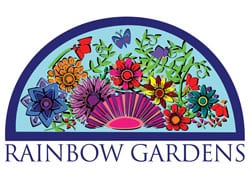
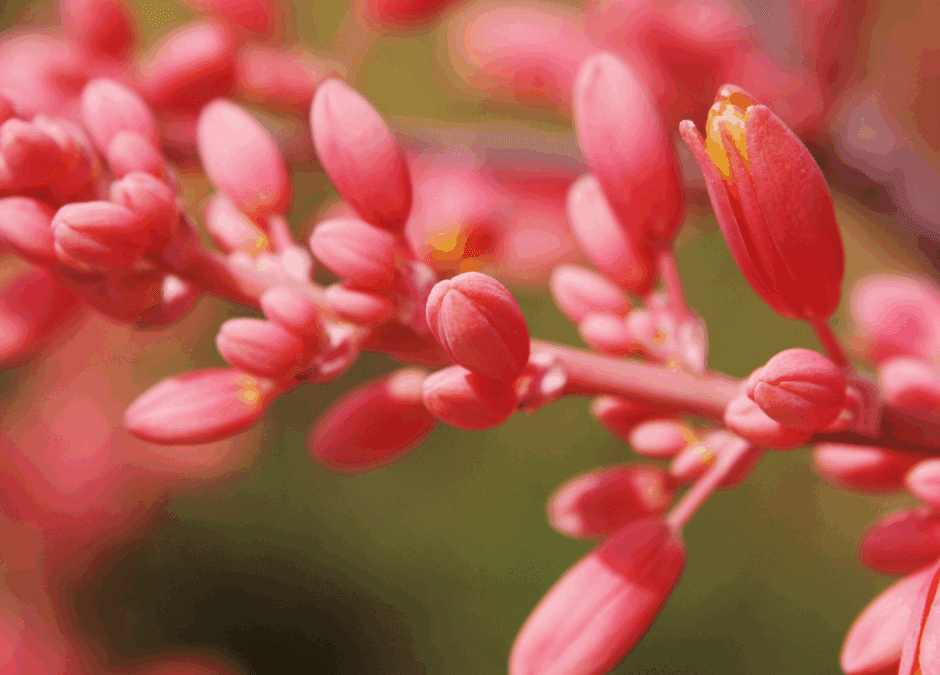
Mine are so large. When is a good time to pull them out and divide them?
Hi Lori,
Fall is the best time to divide these plants, with early spring after the cold has passed, being runner up. Glad yours are doing so well. Maybe you can share the babies with friends and family for holiday gifts!